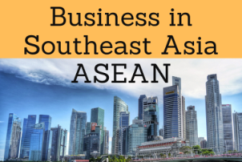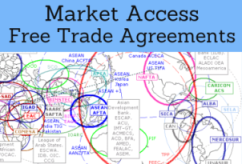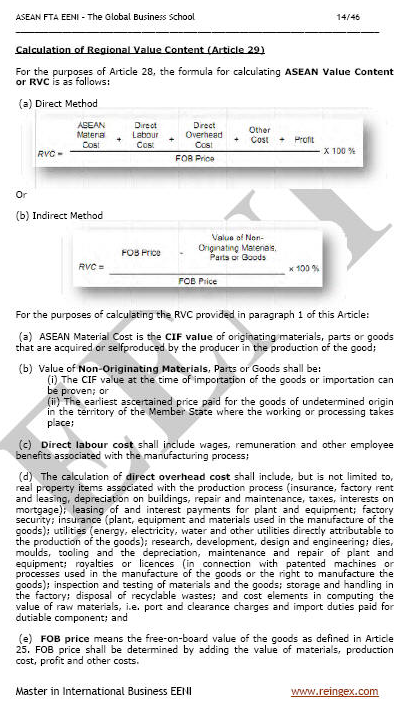ASEAN Free-Trade Area, Import Duties, Singapore

Tariff liberalization, ASEAN Markets. Customs. Cambodia, Laos, Myanmar, Vietnam
- Introduction to the ASEAN Free-Trade Area (AFTA)
- Free Trade Agreement of the ASEAN Free Trade Area (AFTA)
- Tariff Liberalization
- Import Duties and Tariff Rate Quotas Elimination
- ASEAN Rules of origin
- Calculation of the Regional Value Content
- Non-tariff Measures
- Import Licensing Procedures
- Trade Facilitation
- Standards, technical regulations and conformity assessment procedures
- Sanitary and Phytosanitary Measures
- ASEAN Single Window
- ASEAN Customs;
- Customs Valuation
- Emergency situation

The Subject “ASEAN Free-Trade Area” belongs to the following Online Programs taught by EENI Global Business School:
Masters: International Business, Foreign Trade.
Languages:  or
or  ASEAN
ASEAN  Zone de libre-échange de l’ASEAN
Zone de libre-échange de l’ASEAN  ASEAN.
ASEAN.

Masters adapted to the ASEAN Students:  Brunei,
Brunei,
 Cambodia,
Cambodia,
 Indonesia,
Indonesia,
 Laos,
Laos,
 Malaysia,
Malaysia,
 Myanmar,
Myanmar,
 Philippines,
Philippines,
 Singapore,
Singapore,
 Thailand, and
Thailand, and  Vietnam.
Vietnam.

ASEAN Free-Trade Area (AFTA)
The objective of the ASEAN Free-Trade Area is to reach free trade in products in the ASEAN Region to create a single market and production base for a deeper economic integration of the ASEAN economies towards the ASEAN Economic Community achievement by 2015.
The Agreement on Common Effective Preferential Tariff Scheme for the ASEAN Free-Trade Area needs that the tariff rates levied on a huge range of foreign trade of products within the ASEAN Region be reduced to 5%.
Most of the ASEAN region is a free-trade area. Accounting for 96% of all the international trade of the Association of Southeast Asian Nations, the first six signatories of the Common Effective Preferential Tariff Scheme for the ASEAN Free-Trade Area (AFTA) have reduced their custom tariffs on the intra-regional trade to 5% for all the export products to the “Inclusion list” or removed them in total.

Sample - ASEAN Free-Trade Area (AFTA)

The member economies of the ASEAN should eliminate the import duties on all the export products traded between them by 2010 for the ASEAN-6 and by 2015, with flexibility to 2018, for CLMV (Cambodia, Laos, Myanmar and Vietnam.).
- ASEAN-6: Brunei, Indonesia, Malaysia, the Philippines, Singapore, and Thailand
- CLMV: Cambodia, Laos, Myanmar, and Vietnam
For ASEAN-6, by 1 January 2009 (Brunei, Indonesia, Malaysia, the Philippines, Singapore, and Thailand).
- Import duties of at least 80% tariff lines are eliminated
- Import duties on all the ICT products, as defined in the e-ASEAN Framework Agreement, are removed
- Import duties on all the Priority Integration Sectors products are at 0%
- Import duties on all the goods are equal to or less than 5%
For Laos, Myanmar, and Vietnam, import duties on all the products are equal to or less than 5% by 2009.
For Cambodia, import duties of at least 80% of the tariff lines are equal to or less than 5% by 2009.
- ASEAN Economic Community
- FDI in the ASEAN Countries
- ASEAN Trade Agreements: ASEAN Free-Trade Area (AFTA), Indonesia-Malaysia-Thailand Growth Triangle, Mekong Economic Cooperation Strategy, East ASEAN Growth Area, China, Canada, Australia-New Zealand, India, the EU, South Korea, Russia, the U.S., Pakistan, Japan..
(c) EENI Global Business School (1995-2024)
We do not use cookies
Top of this page



